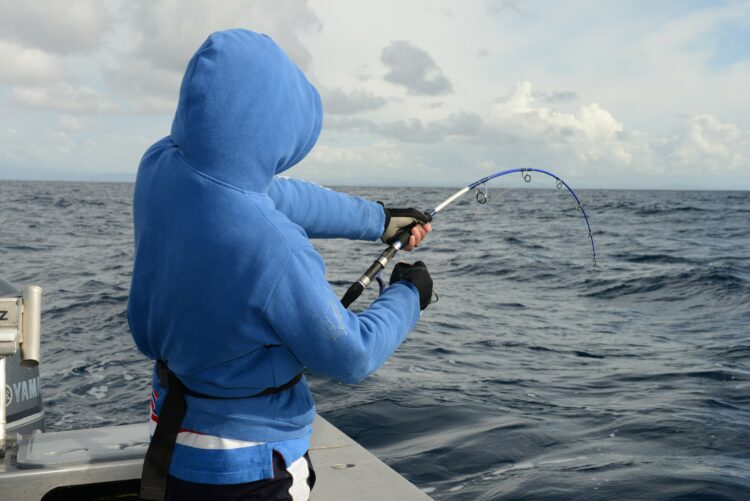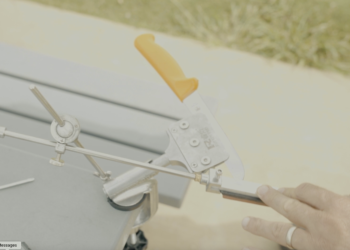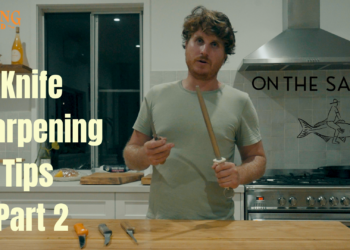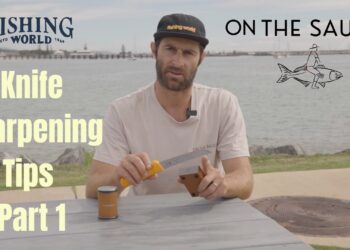MOST anglers generally set their drags conservatively and generally use a third of the line’s breaking strain as a rule of thumb. There are many reasons for using a lighter drag setting; the chance of pulling hooks generally decreases with reduced pressure on the hook point whilst lighter drags give a margin of safety and reduce the risk of rod and line breakage for inexperienced anglers.
Sometimes, however, fishing a heavier drag setting is needed. If a fish is heading back to a snag or reef, if you’ve hooked something much larger than expected or if you need to haul in your catch before it’s taken by a shark then chances are that you’ll need to up the drag setting. Knowing how far you can push your gear is critical and if you want to redline your tackle you’ll need to be attentive with my knots, rigging and how you fight the fish.
Once you have a greater understanding of the limitations and points of failure you can more confidently fish drag settings much higher than imagined whilst minimising the chances of failure.

Destruction Test Knots
Testing your connections to the point of failure will give a good idea of the amount of pressure you can apply before something breaks and it’s best to do this at home rather than experimenting once you’ve hooked that fish of a lifetime.
Destruction testing involves tying a knot a number of times and measuring the pressure required to make the knot fail. You’ll need some duct tape, a set of scales, your mobile phone and something study to tie off to like a bolted fixture in your garage, a fence post of even the towbar of your car. Start by wrapping one end of the line around the sturdy fixture about 6-10 times then secure with duct tape.
More specialised and complex friction based knots are held in high regard when tied correctly offering much stronger knot strength
Wrap the other end around the hook on the scales a similar number of times and secure with tape also. The line should be wrapped rather than tied to avoid introducing any new weak points. Start the video on your phone to capture the reading on the scales. Once secure, pull gently on the scales until something breaks. You can then play back the video to analyse the reading at the point of failure. Repeat the test a few times and take an average to understand how much pressure it takes to destroy your knots.
Maximum Drag
Once you’ve destruction tested your knots, apply the same testing method as above but this time rig up your fishing outfit and repeat the test by having a mate hold the scales and applying
pressure through the rod and reel. Start with setting your drag to 30 per cent of the knot destruction level, then 50 per cent, then 70 per cent and if possible keep going higher. With each setting you’ll get a feel for the dynamics of your fishing outfit at elevated drag setting and where the maximum possible drag setting for the outfit is.
This is an interesting exercise and you’ll probably find that the drag settings you traditionally fish are much lighter than expected. You’ll also find out where the limitations in your outfits lies; the rod might be softer than indicated on the blank, the reel drag might struggle at the extremes or you might find the line isn’t tight enough on the spool and slips on the spool under pressure.

Connections
Most fishing knots snug down on a swivel or the eye of a hook using a series of wraps, twists and hitches. The Uni knot, Blood knot
and Albright are classic fishing knots that are quick and easy to tie while being relatively strong however some have limitations with different thicknesses of braid or mono. More specialised and complex friction based knots are held in high regard when tied correctly offering much stronger knot strength and slim profile for casting.
These connections take longer to tie and require greater attention to detail to ensure a robust connection. Examples include the FG knot and PR knot where the braid is weaved under pressure onto a nylon leader and finished off with a series of
hitches. Other friction based connections include braided loops commonly attached to the end of fly lines along with the use of insertion of heavy mono leader into Dacron to make a wind on leaders. Knowing which knot to use and when is important in
being able to extract the maximum amount of pressure through your outfit without failure. Again, the best way to test the optimal connection is to tie a number of knots and destruction test them.
Understand The Weakest Link
Failure points are introduced whenever you tie a knot or introduce terminal tackle; they’re also introduced once you start catching a few fish with wear on your lines, leader and general wear on your outfit over time potentially causing trouble. Although you might be using the best possible equipment, attention to detail is paramount when dealing with elevated levels of stress. Do you check and retie your leader after each fish? Abrasion on your leader can significantly decrease its tensile strength and a fish gnawing away at your knot can cause the knot to fail. Why not destruction test a piece of scuffed leader before throwing it out to better understand how the abrasion weakens it.
Are your hooks able to withstand elevated drag settings or will they straighten when the pressure increases? Are you swivels or split rings able to withstand a prolonged fight under extreme drag settings? What about your reel and it’s limitations? Whilst a reel may claim to have a certain drag rating what happens after a few years of use wear, will the drag still remain smooth under extreme loads, will it slip or worse still will it lock up?
When did you last service your reel and ensure all components were securely fastened, adequately lubricated and operating optimally. No matter how good your tackle and knots are, your outfit will only be as good as the weakest link so it’s important to remain vigilant, maintain your gear, check you knots and leaders frequently and understand the limitation of each component you’ve tied on.




















